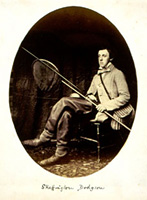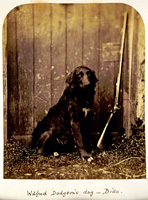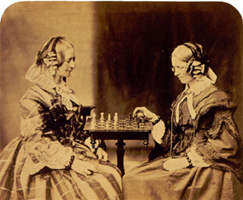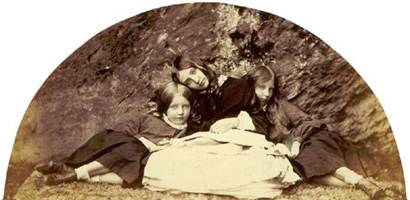Photographs of Children
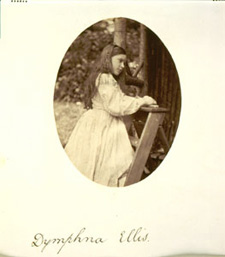
Dymphna Ellis, 25 July 1865. His subject
later recalled that Carroll "came to
our country house to photograph the children
I feel sure I was a 'favourite.'He made every
child that. He developed the photographs
in our cellar... I remember the mess and
the mystery... We cried when he went away
We were absolutely fearless with him. We
felt he was one of us, and on our side
against all the grown-ups."
In an 1877 letter, Carroll tells his correspondent that he considers himself "an amateur-photographer whose special line is 'children'." He then encourages the recipient to bring the children by to meet him "not [to] be photographed then and there (I never succeed with strangers), but to make acquaintance with the place and the artist, and to see how they relished the idea of coming, another day, to be photographed."
Carroll's photographic style evolved from the straightforward work of his early family albums into a more adventurous and interpretive one. In an almost magical fashion, Carroll's photography allowed the natural child and the fanciful artist to combine in the production of memorable images. In fact, Carroll has left us with some of the most profound portraits of children ever created.

"St. George and the Dragon," 1875. The
composition features Xie Kitchin and her three
brothers, George Herbert Kitchin, Hugh Bridges
Kitchin and Brook Taylor Kitchin. Alexandra (Xie)
Rhoda Kitchin was the daughter of the Rev.
George William Kitchin, Dean of Winchester and
later of Durham. Dodgson began photographing
Xie (pronounced "Ecksy") in 1868 and continued
to use her as a frequent subject throughout the final
years of his photographic career. He considered her
to be one of his most amenable and striking models
and recalled in an 1885 letter how he had
"photographed her nearly 50 times: from 4 years
old upwards."
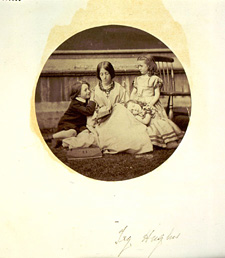
Tryphena Hughes and three of her children:
Arthur Jr., Amy and Agnes, 19 July 1864. This
grouping of the family of Arthur Hughes includes
a number of volumes that are most likely some of
Carroll's photographic albums.
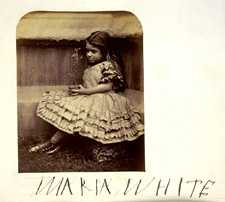
Maria White, 11 July 1864. Not all of Carroll's
subjects came from his social class. Maria was
the niece of the porter at Tom Quad Gate, Christ
Church, Oxford, and "sat capitally."

